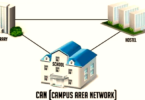Computer Network Types
Computer networks connect computers in close proximity for more accessible communication and sharing of hardware and software resources. Networks may be wireless or wired and employ various communication protocols.
Local Area Networks (LANs) connect computers and information technologies such as printers, fax machines and scanners within a small geographical area for business, academic or manufacturing use. LANs may be found anywhere from office buildings to homes or even the factory floor.
Shared Files and Data Sets
Computer networks allow multiple computers and their associated peripherals to communicate and share files, resources, programs and services between themselves. They serve as the cornerstone of today’s information infrastructure – from video calls to online collaboration software and file storage. A network can span across cities, regions or the entire globe, be wired or wireless and private or public.

Computer Network Types
Local area networks (LAN) are the foundation of computer networking. These networks are typically used to connect computers within an institution like a school, lab environment, or home, but they can also link computers in one office building or workplace. Although local area networks are the most frequent type of computer network that can be set up, other types of networks exist as well.
Every time you and your colleagues access a shared printer or use group messaging software, you are taking advantage of a computer network. Such networks may be administered by businesses, government agencies and educational institutions; for instance, a city might set up surveillance cameras that monitor traffic flow and report incidents directly to emergency personnel. This system might be part of a metropolitan area network (MAN), which allows city officials to respond more quickly in cases of traffic accidents as well as advise drivers of alternate routes or issue tickets for violating red lights.
Other computer networks include campus area networks (CAN), which consist of interconnected LANs connected through wireless technology and used mostly by universities and colleges. Furthermore, storage area networks facilitate block-level data storage capabilities – typically used by large enterprises and governments.
Personal Area Network (PAN) is the simplest type of computer network, enabling individuals to link all their digital devices together within an environment. PANs typically connect to the internet using broadband access; its most prevalent networking technology is Wi-Fi for wireless communication between devices; however, it may also use coaxial or twisted-pair cables commonly found around homes and offices for connecting computers and other devices together.
Convenient Resource Sharing
Computer networks make sharing resources, including files, software applications and physical devices, easy for businesses of all kinds – saving costs while increasing productivity and allowing teams to work more effectively without travelling or moving data around between locations. Network access also enables users to work more effectively across locations by connecting users who collaborate more closely than before without needing to travel as frequently.
Computer networks come in three main varieties: LAN, WAN and MAN. A LAN connects devices within a small area, such as an office or home, using Ethernet technology for communication; larger than a LAN but smaller than a WAN, usually maintained by either local councils or large companies.
A wide area network (WAN) connects computers over long distances. This category of computer networking includes several LANs or groups of LANs interconnected through high-speed communications links; perhaps the best-known example of such a WAN is the Internet.
There are various network architectures, such as client/server and P2P. Client/server is the more prevalent network architecture, with its central servers providing storage resources to clients, while P2P networks tend to offer greater fault tolerance should one computer or device become unavailable.
A storage area network (SAN) is a high-speed network that links shared pools of storage devices to multiple servers without depending on LANs or WANs for connectivity, providing block-level access. Converged or virtual SANs are most frequently seen today; however, there are other forms available as well.
A WLAN, or wireless local area network, is a wireless computer network that acts like a LAN but without physical cables. Commonly found in homes and businesses alike, Wi-Fi networks are convenient, cost-effective, easy networking solutions – however, they may limit network speed as they’re accessible to anyone on the same wireless connection – thus, they should only be used in trusted environments.
Easy Communication
Computer networks offer users a convenient means of sharing files and resources between computers easily, from something as basic as connecting several laptops to one printer to more complex networks that connect across the entire internet backbone. Not only can users exchange files through these networks, but it’s also easier than ever for users to communicate among themselves through emails, instant messages, video conferencing or similar means.
Computer networks may be created using either wired or wireless communication channels, with wired networks relying on co-axial, twisted pair, and optical fibre cables as connections, while wireless networks rely on radio waves or Wi-Fi signals to send information over them. One common form of computer network is known as Local Area Network (LAN), connecting devices within a relatively limited geographical area like an office or school campus based on Ethernet technology that may use either star, bus, or ring topologies to form.
Another network is the Metropolitan Area Network (MAN). This type of system spans an entire city or campus and may be maintained by multiple network administrators in different locations.
Wide Area Network (WAN). WANs are commonly used to link computers in multiple cities or countries together and can be managed either privately or by government authorities, typically offering high data transmission rates.
Preparing for competitive exams requires students to understand the fundamental concepts of computer networking. It is a subject covered in most major government exams and frequently asked about; to assist candidates, we have created this handy guide on various computer networking types and their functions.
Security
Computer networks have become an indispensable asset in today’s technologically advanced society, but they also present inherent security vulnerabilities. Therefore, they must be protected against cyber threats such as unauthorised access to data, devices, applications or users – with numerous security measures available that can protect computer network users and their information.
Security measures for computer networks are usually organized into different levels based on the Open Systems Interconnection (OSI) model, which depicts various layers that information travels through when moving from computer to computer. Each layer serves a vital function in protecting information against cyber threats entering and damaging the system – this underscores why it is vitally important to implement suitable computer network security solutions.
Local Area Networks, more commonly referred to by their acronym LANs, are among the most prevalent and well-known forms of computer networks. A LAN connects computers and other low-voltage devices within a limited physical area – often within one building or two buildings close by – such as one or both being owned and managed by enterprises; they can also be owned or run by local councils or universities, for example.
Personal area networks (PANs), commonly abbreviated to PAN, are designed for home use and may use wireless technology or wired connections between one computer and various devices such as printers, TVs, smartphones, tablets and more. A wide area network (WAN), is the biggest type of computer network and serves to connect many local area networks across a broad geographic region so computers in various locations can exchange information and resources efficiently.
Campus Area Networks are also commonly utilized by schools and universities for interconnecting the local area networks found within individual campus buildings into a unified network for greater coverage. They may also connect to wider area networks.




